A meteor shower outburst from a shattered comet may spawn new tau Herculids display on May 30
The stage is set for a potentially impressive performance.
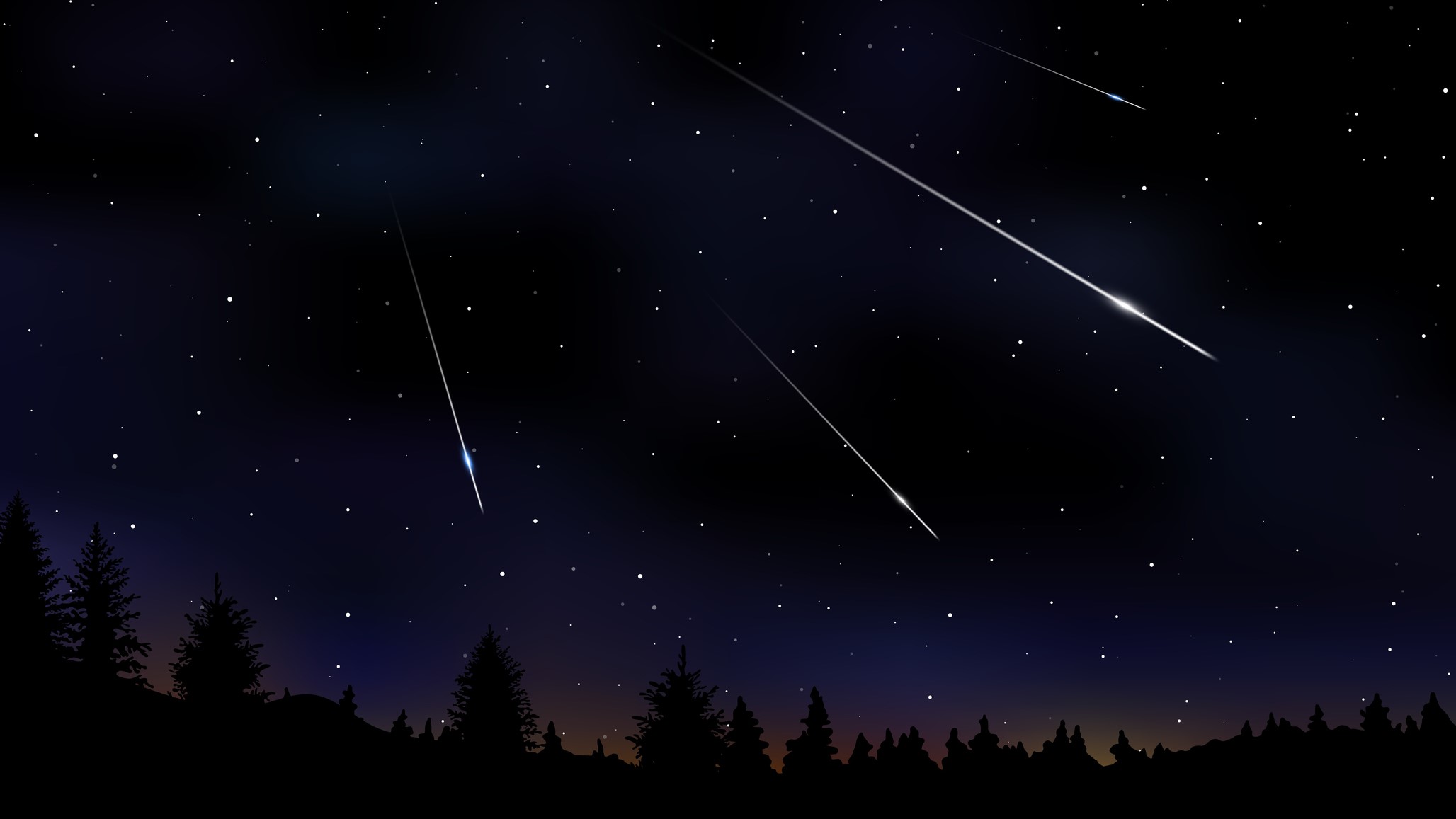
New for 2022, the tau Herculid meteor shower may make an appearance on the night of May 30-31.
Sometimes, astronomy can be full of surprises. Take the case of a tiny comet, normally far too faint to be seen without the help of a telescope. But in 1995, it suddenly and quite unexpectedly brightened up to become dimly visible with the naked eye.
Come the end of May, things could turn exciting, thanks again to this same tiny comet. On that night, a new meteor shower — the tau Herculids — might erupt, perhaps ranking with the best of the annual meteor displays.
Yet, there is also a small chance of something extraordinary — perhaps one of the most dramatic meteor displays since the spectacular Leonid meteor showers of more than 20 years ago.
Or perhaps nothing at all will be seen.
Related: Meteor shower guide 2022: Dates and viewing advice
How it all started
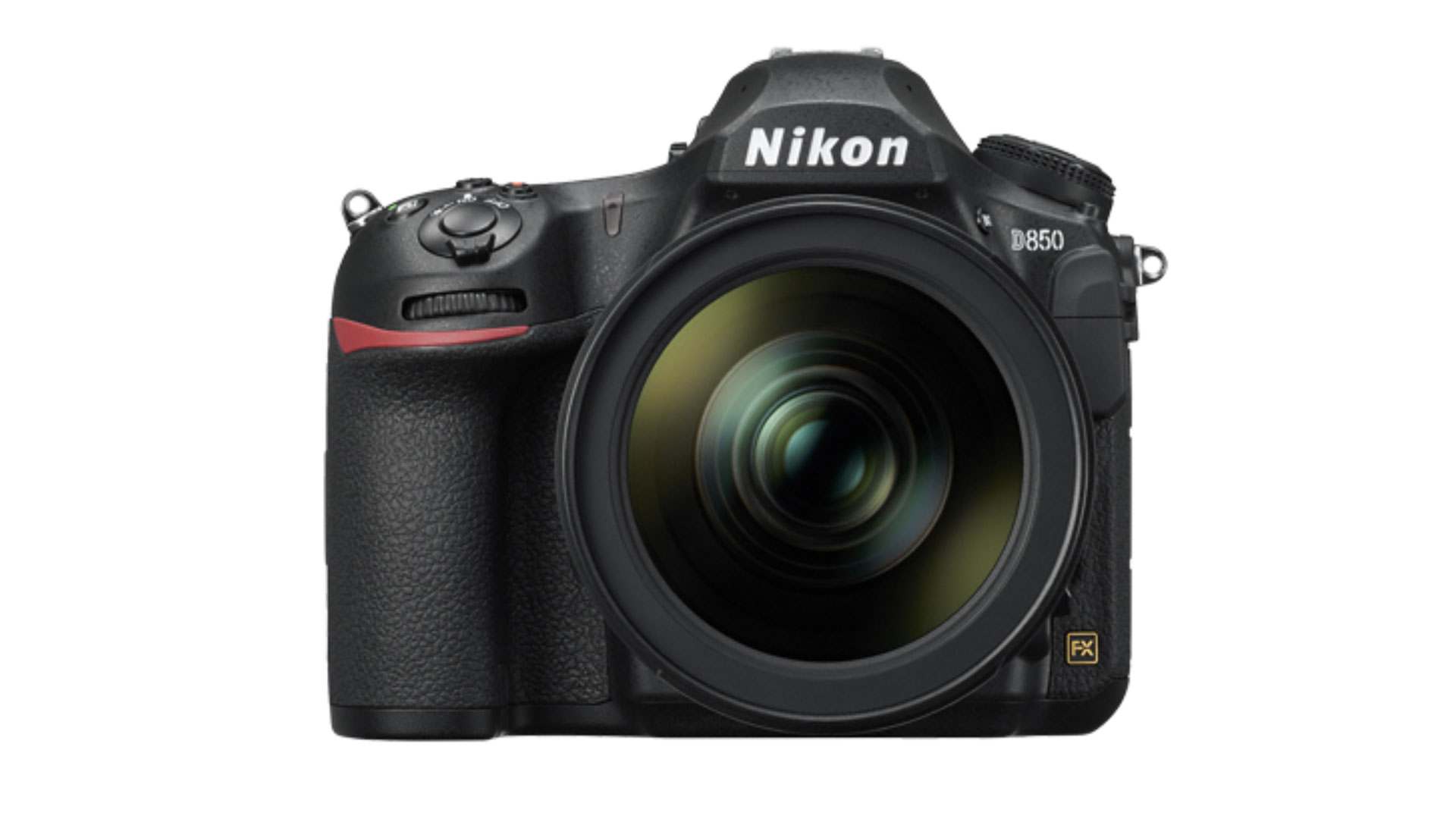
If you're looking for a good camera for meteor showers and astrophotography, our top pick is the Nikon D850. Check out our best cameras for astrophotography for more and prepare for the tau Herculids with our guide on how to photograph a meteor shower.
This rather compelling story begins 92 years ago, on the night of May 2, 1930. Two German astronomers, Friedrich Carl Arnold Schwassmann and Arno Arthur Wachmann were exposing plates at the Hamburg Observatory in Bergedorf, Germany to catalog new asteroids, when they accidentally stumbled across the image of a new comet. This was the third such discovery the two men made, the others in 1927 and 1929.
Get the Space.com Newsletter
Breaking space news, the latest updates on rocket launches, skywatching events and more!
After discovery, orbital data for comet 73P/Schwassmann-Wachmann 3 (which from here on we will refer to as 'SW 3') show it passing only 5.7 million miles (9.2 million km) from Earth on May 31. Despite its very close flyby, however, comet SW 3 never got bright enough to be visible with the naked eye; it could only be glimpsed with good binoculars or a telescope.
And even though comet SW 3 orbits the sun about every 5.4-years, after 1930 it was missing in action for quite a while. In fact, between 1935 and 1974, SW 3 came and went eight times without being sighted. It was not seen again until March 1979. Its next return, in January 1985 was missed, but it was recovered again early in 1990.
Full of surprises
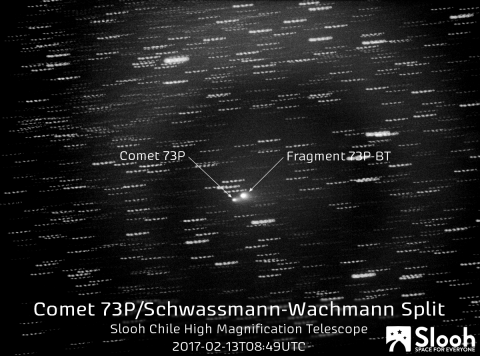
Astronomers expected comet SW 3 to make another uneventful return in the fall of 1995. But during early October, the Central Bureau for Astronomical Telegrams suddenly began receiving 'numerous reports from observers worldwide of independent discoveries' of a naked-eye comet, low in the western evening twilight and sporting a dust tail 1 degree long.
But this wasn't a "new" comet at all — it was SW 3!
This was astonishing because the comet never came closer to Earth in 1995 than 122 million miles (196 million km). By all rights, it should have been visible only with moderately large telescopes. And yet there it was, shining 6.5 magnitudes brighter than anticipated — a nearly 400-fold increase in brightness! As for what caused this tremendous outburst, observations in December of SW 3 made at the European Southern Observatory in La Silla, Chile revealed that its tiny nucleus had fractured into four parts.
The comet was still quite bright on its next visit in the fall of 2000, showing that two of the fragments spotted in 1995 had returned, together with a new one, which probably broke off during the 1995 return.
In the spring of 2006, the disintegrating comet made its return appearance, initially showing at least eight remnants, and some of the fragments were themselves forming their own sub-fragments.
On April 18, 2006, the Hubble Space Telescope recorded dozens of fragments. Between May 4th and 6th, it was the Spitzer Space Telescope's turn to image the comet; using its Infrared Array Camera (IRAC) it was able to observe 45 of 58 comet chunks. In all, SW 3 ultimately broke into more than 68 fragments and at its most recent appearance in March 2017 it showed signs that it's continuing to break apart and shedding new pieces with each return through the inner solar system.
Comet crumbs
A disintegrating comet with an orbit that comes very close to our Earth, opens up a discussion about the possibility of a new meteor shower being spawned. The chance of interacting with the dross of a fragmented comet may sound familiar and indeed, most astronomy texts often refer to the famous case regarding the splitting of comet Biela in 1842 or early 1843 and its association with spectacular "Andromedid" meteor storms occurring in 1872 and again in 1885. The question is, might we hope in 2022 for a similar performance resulting from the 1995 break-up of SW 3?
Three important factors were considered:
- When the comet fragmented in 1995, a tremendous expulsion of dust particles was ejected into space.
- When SW 3's nucleus broke apart, particles were likely ejected into space in all directions. Small particles the size of pebbles and sand grains are normally pushed behind the comet by the pressure of sunlight. But larger gravel and nugget-sized bits are not affected by solar radiation, so they end up on paths closer to the sun. The closer a celestial body is to the sun, the faster it will move in its orbit (gravity insists upon that; that's fundamental natural law). So, in time, these larger bits and pieces pass by the comet as they move in smaller orbits and thus, move out ahead of the comet.
- For those larger pieces to attain this faster orbit, they need to be ejected into space at nearly 60 m.p.h. (26.71 meters per second). Typically, this speed is a bit on the high side, but the sudden breakup of the comet's nucleus in 1995 and its resultant outburst of material might have been just potent enough to produce this necessary speed.
As a consequence, those larger particles expelled in 1995 may have migrated to a position forward of the comet, not behind. And particles positioned ahead of the comet is the necessary ingredient for a meteor outburst.
Studies by teams of reputable meteor shower experts, including one from Germany, and others from Japan, France, as well as by this author, have all come to the same conclusion: Earth will have a direct interaction with material released from the splitting of SW 3 at the end of May 1995. And the possibility of a new, never-before-seen meteor display appears especially promising. A consensus of the various predictions all points to 05:00 UT/GMT on Tuesday, May 31.
That translates to 1 a.m. EDT on Tuesday, May 31, or 10 p.m. PDT on Monday, May 30.
If you're hoping to photograph the tau Herculid meteor shower, or want to prepare your gear for the next skywatching event, check out our best cameras for astrophotography and best lenses for astrophotography. Read our guide on how to photograph meteors and meteor showers for more helpful tips to plan out you photo session.
Visibility: Radiant and moonlight
If this meteor outburst comes to pass, their possible radiant, or emanation point would be positioned within the boundaries of the constellation of Boötes the Herdsman, about 6 degrees north-northwest of the brilliant yellow-orange star, Arcturus.
As for the zone of visibility, a large portion of the contiguous United States, south-central and eastern Canada (including the Maritime Provinces), Mexico, Central and South America and a small slice of West Africa are the regions of the world well-positioned for this event. In the U.S. the altitude of the radiant ranges from around halfway up in the western sky in eastern New England to nearly overhead in southern California and the Desert Southwest.
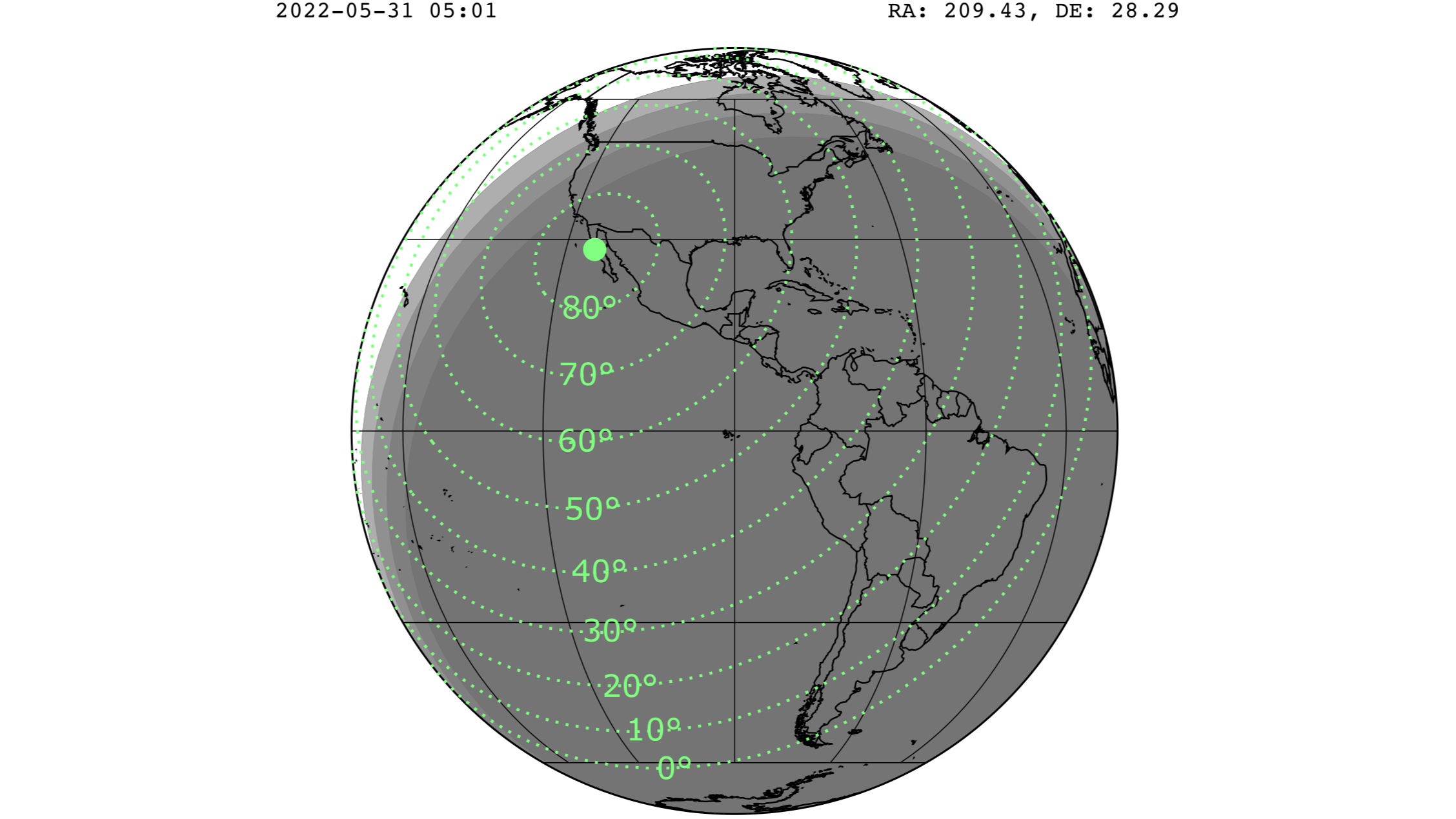
Across parts of the Pacific Northwest, the northern Rockies and Great Plains, as well as for a slice of the Canadian Prairies, northern Ontario, central Quebec, most of Newfoundland and Labrador, the peak is expected to come during astronomical twilight (sun 12 to 18 degrees below the horizon), but the sky should still be sufficiently dark for sighting the brighter stars as well as any bright meteors.
Unfortunately, for far western and northern North America, as well as for the rest of the globe, the sky will either be too bright, bathed in sunlight or facing away from any incoming meteors, precluding a view of any possible display.
As far as the moon is concerned, it will be new on May 30. So, the skies will be dark.
What will we see?
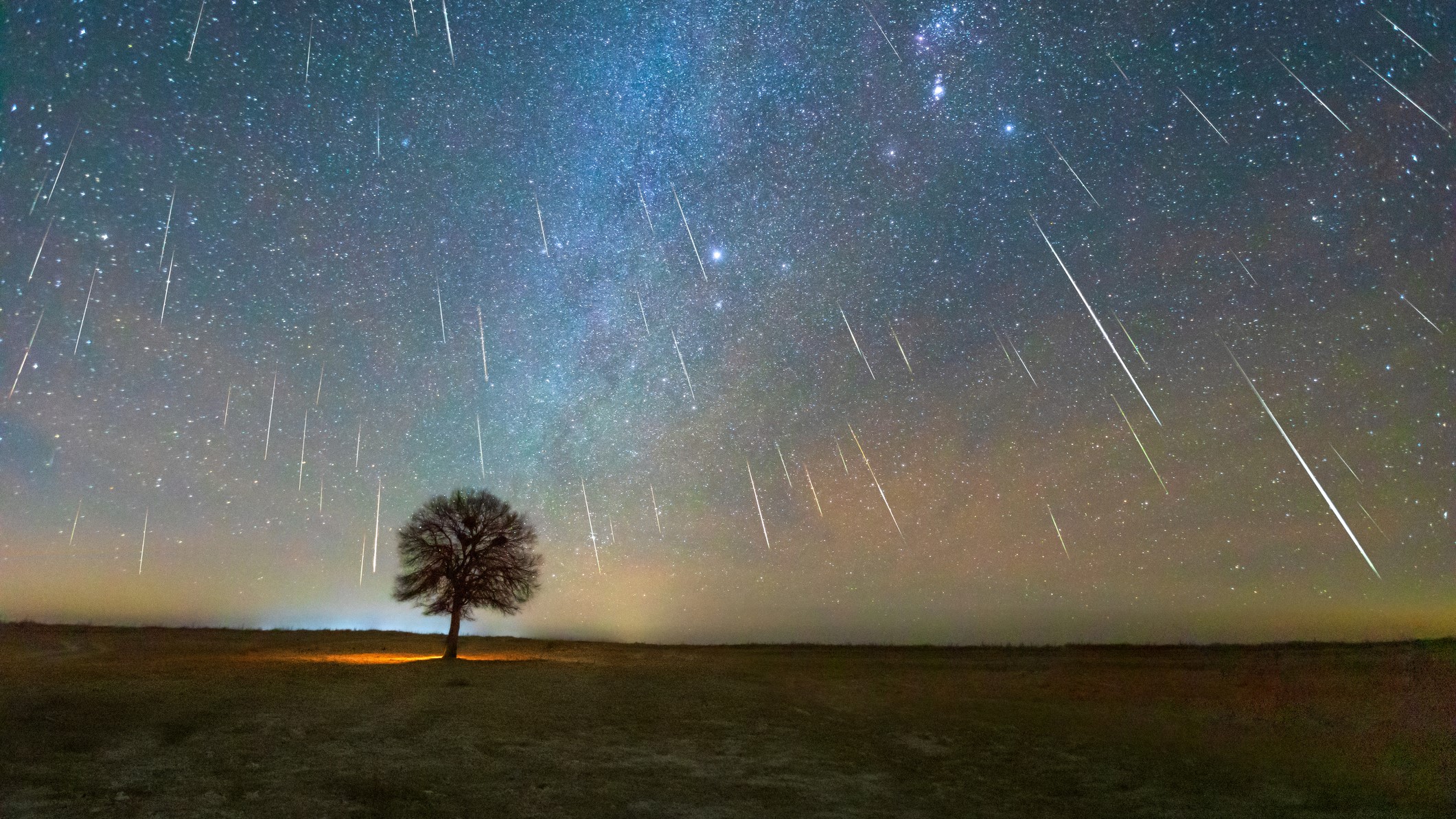
That is the $64,000 question. This will be the first time the Earth and the comet debris shed in 1995 have come together since the fragmentation event, but we can't see where the meteoroids have spread to (until we run into them), so it is hard to predict exactly how much the Earth might encounter as we cross the comet's path this month. It all depends on whether the debris has spread far enough out ahead of the comet to interact with our planet. If not, we'll see next to nothing at all.
On the other hand, we might see meteors coming by the dozens; a strong outburst similar in numbers to the annual December Geminids.
And if we pass through a heavy concentration of comet debris, then there is a possibility of a full-fledged meteor storm! As for how long any outburst might last, it would probably be short-lived; not more than several hours at most.
How to watch
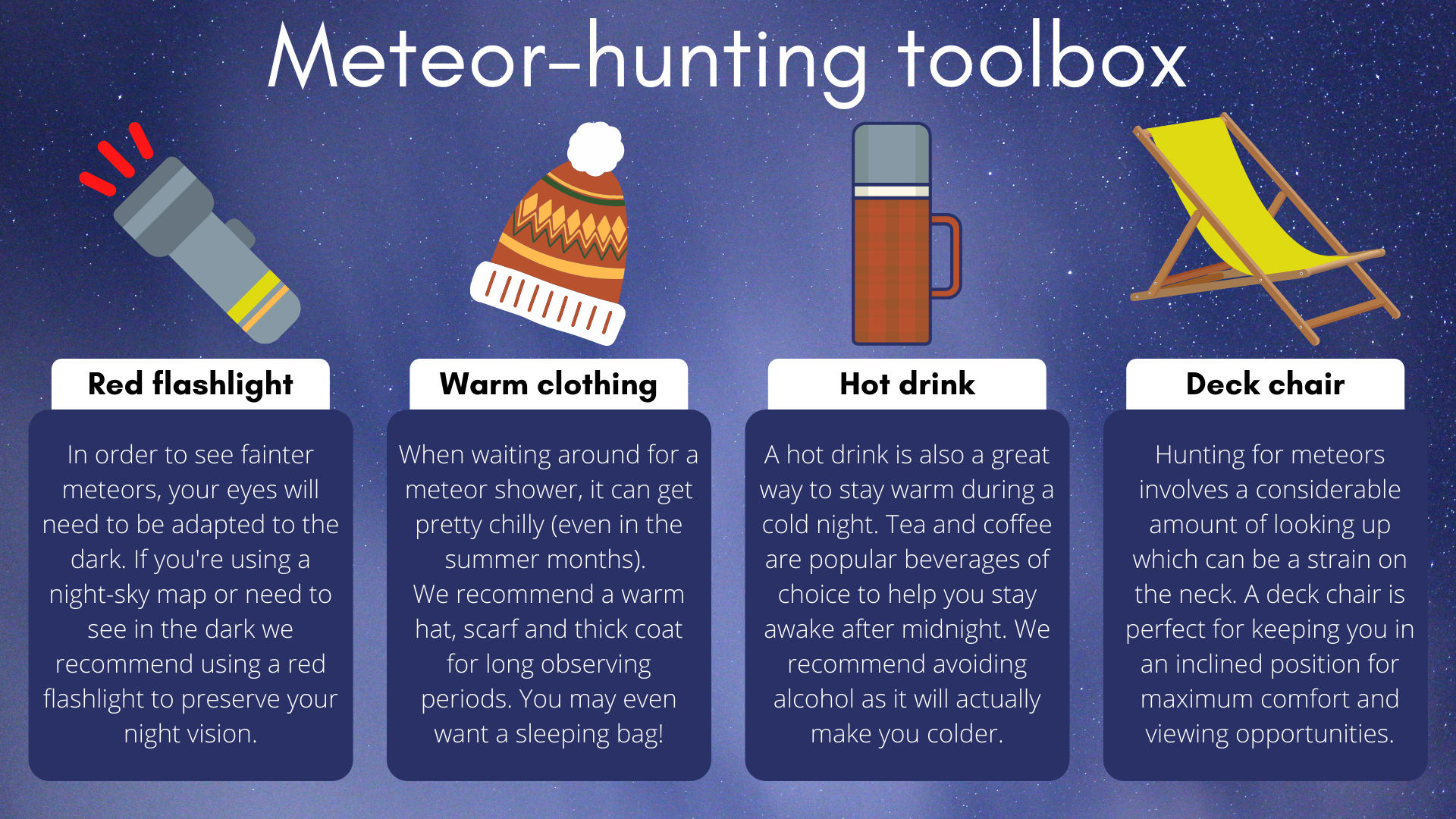
You're going to be outside for a while, as you'll need to wait for your eyes to become dark adapted. A reclining lawn chair is ideal. Be sure to dress for the weather; it might get chillier than what the local forecast suggests so also bring along a blanket. Don't stare at any one part of the sky; keep looking all over.
The most important thing concerning your possible meteor watch is finding a dark site far from any bright lights from which to observe. This will be essential!
And here is the reason: The particles will encounter the Earth at a very low velocity of just 10 miles (16 km) per second. That's almost as slow as it is possible to hit the Earth from an orbit around the sun. The faster a meteoroid of a given size travels, the brighter it will be, which means that the particles from SW 3 will likely produce very faint meteors, and only the biggest pieces will produce outstandingly bright shooting stars. But given the nature of the fragmentation of SW 3's nucleus, it's possible that plenty of larger bits and pieces among the small ones, so we can't rule out there being lots of spectacular slow-moving fireballs as part of the shower's display.
So, remember: The darker your sky, the more meteors you'll see.
Good luck and clear skies!
Editor's Note: If you snap an amazing photo of the tau Herculids meteor shower and would like to share it with Space.com's readers, send your photo(s), comments, and your name and location to spacephotos@space.com.
Joe Rao serves as an instructor and guest lecturer at New York's Hayden Planetarium. He writes about astronomy for Natural History magazine, the Farmers' Almanac and other publications. Follow us on Twitter @Spacedotcom and on Facebook.
Join our Space Forums to keep talking space on the latest missions, night sky and more! And if you have a news tip, correction or comment, let us know at: community@space.com.

Joe Rao is Space.com's skywatching columnist, as well as a veteran meteorologist and eclipse chaser who also serves as an instructor and guest lecturer at New York's Hayden Planetarium. He writes about astronomy for Natural History magazine, Sky & Telescope and other publications. Joe is an 8-time Emmy-nominated meteorologist who served the Putnam Valley region of New York for over 21 years. You can find him on Twitter and YouTube tracking lunar and solar eclipses, meteor showers and more. To find out Joe's latest project, visit him on Twitter.









